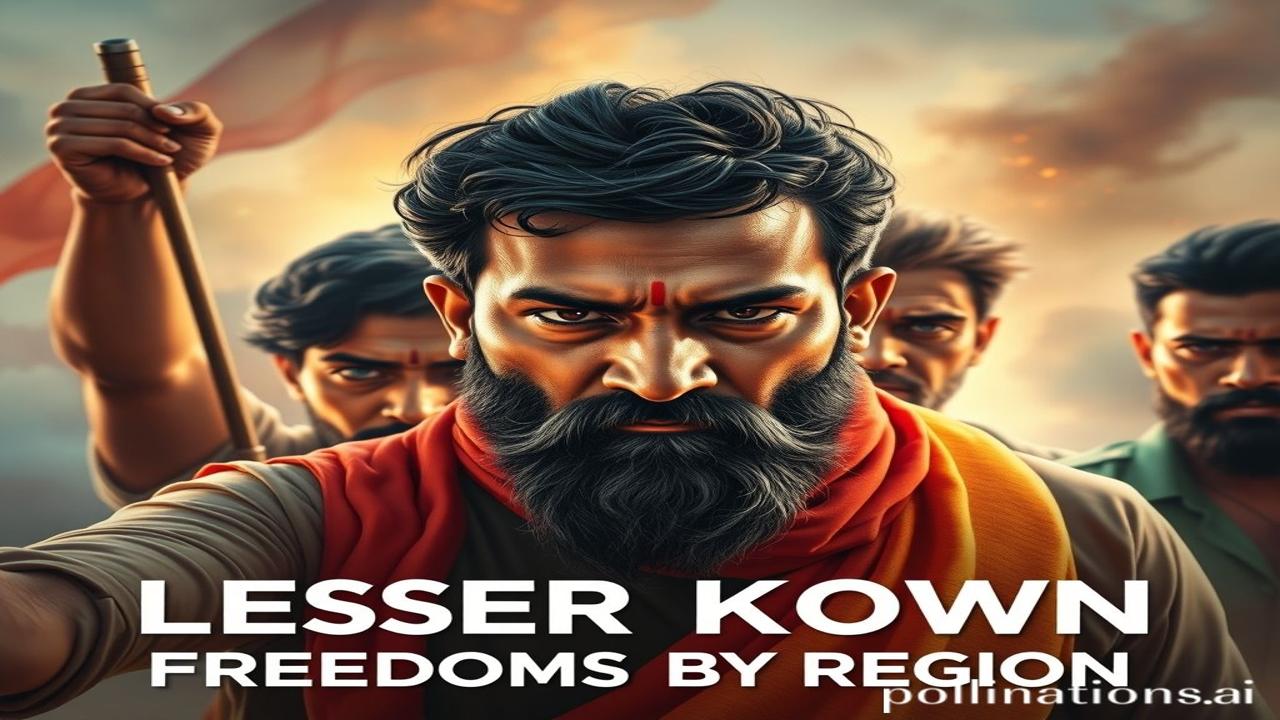Waqt Ki Dhool Mein Chhupe Sitare: Unsung Heroes of India’s Freedom Struggle by Region
Kabhi kabhi lagta hai na, jaise itihaas ki kitaabon mein kuch panne ghum ho gaye hain? Jaise kuch sitare itni shiddat se chamke, lekin waqt ki dhool mein kahin kho gaye… Humne Gandhi ji, Nehru ji, aur Bose jaise mahaan netaon ke baare mein toh bahut suna hai. Lekin kya aapne kabhi un logon ke baare mein socha hai jinhone gaon-gaon, shehar-shehar mein azaadi ki aag ko jalaye rakha? Aaiye, aaj hum Bharat ke unhi kum-jane jaane wale swatantrata senaniyon ki kahaniyan sunte hain.
Azadi Ki Anjani Dastaan: A Regional Perspective
What is this all about? Well, we’re diving deep into the stories of those freedom fighters who, for various reasons, didn’t quite make it to the mainstream historical narrative. This isn’t about diminishing the contributions of prominent leaders. Instead, it’s about widening our perspective to appreciate the collective effort of ordinary people who made extraordinary sacrifices.
When are we talking about? We’re covering the period from the mid-19th century (the Sepoy Mutiny of 1857) to India’s independence in 1947. Where? Across the diverse regions of India – from the lush green hills of the Northeast to the arid landscapes of Rajasthan, from the coastal plains of South India to the heartland of the North.
Why is this important? Because understanding the struggles of these regional heroes gives us a more nuanced and complete picture of India’s freedom movement. It reminds us that freedom wasn’t just won in the halls of power but in the fields, villages, and hearts of countless individuals.
Zameeni Sach: Log Aur Jeevan – A Glimpse Into Their Worlds
Let’s journey to a few corners of India and meet some of these lesser-known heroes:
1. The Northeast: Rani Gaidinliu – The Daughter of the Hills
Imagine the early 20th century, the hills of Manipur reverberating with the chants of “Makhambuan”! This was the clarion call of Rani Gaidinliu, a Naga spiritual and political leader who at the age of 13, joined the Heraka religious movement advocating for Naga self-rule. She fearlessly challenged British rule, organizing guerilla warfare and inspiring her people to resist oppression.
Scene: A young Gaidinliu, draped in traditional Naga attire, addressing a gathering of villagers. Her voice, though soft, rings with conviction. “Angrez humari zameen, humari sanskriti chheen rahe hain! Humein ladna hoga!” She brandishes a dao (a traditional Naga sword), her eyes filled with fiery determination.
Dialogue: “Rani-ma,” an elder asks, “hum kaise in shaktishali logon se ladenge?” Gaidinliu replies, “Humari shakti humari ekta mein hai! Humare vishwas mein hai!”
2. Bengal: Matangini Hazra – The Gandhi Buri
Imagine Bengal in the 1940s, the air thick with the scent of revolution. Matangini Hazra, an elderly woman affectionately known as “Gandhi Buri” (Old Lady Gandhi), fearlessly led processions demanding independence. In September 1942, during the Quit India Movement, she was shot dead by the British police while holding the Indian flag high.
Scene: Matangini Hazra, a woman of unwavering spirit, leading a crowd of protestors towards a police station. She carries the tricolor flag, her face etched with determination.
Dialogue: “Inquilab Zindabad!” she cries, her voice resonating with the crowd. The British police open fire, but she refuses to drop the flag, falling to the ground with the tricolor still in her grasp.
3. South India: Velu Nachiyar – The Warrior Queen of Sivaganga
Picture 18th century Tamil Nadu, a land of formidable kingdoms and brave warriors. Velu Nachiyar, the queen of Sivaganga, was a skilled warrior and diplomat. After her husband was killed by British forces, she vowed revenge. She formed alliances with Hyder Ali of Mysore and raised an army to fight the British, ultimately winning back her kingdom. She is considered one of the first queens to fight for independence in India.
Scene: Velu Nachiyar, astride a horse, leading her troops into battle. She’s dressed in warrior’s attire, a sword in her hand, her eyes blazing with resolve.
Dialogue: “Humari dharti ko angrezon se azaad karaana hai!” she roars to her army. “Hum apni dharti, apni sanskriti, apni azadi ke liye ladenge!”
Dharohar Aur Pehchan: Their Legacy Today
These stories, though often overlooked, are vital to understanding our Bharatiyata. Their courage and sacrifice echo in the values we hold dear today: self-reliance, resilience, and a deep love for our motherland. We see their influence in modern Indian art, theatre, and literature, which often portray the stories of marginalized communities and forgotten heroes.
Majedar Tathya Ya Bhram-Bhanjak: Myth-Busting
Log samajhte hain ki azaadi sirf bade sheharon mein ladi gayi. Lekin asli sach yeh hai ki gaon-gaon, khet-khet mein azaadi ki aag jal rahi thi. These seemingly small acts of resistance were crucial in building the momentum that eventually led to India’s independence.
Drishya Aur Bhavanaen: Sensory Impressions
Imagine the dust swirling around Rani Gaidinliu’s feet as she climbs the mountain paths. Feel the warmth of the sun on Matangini Hazra’s face as she marches towards the police station. Hear the clash of swords and the roar of the crowd as Velu Nachiyar charges into battle. These are the sights, sounds, and sensations that connect us to their stories, making them real and alive.
Antim Vichar Ya Uddharan: Closing Thought
“Swaraj is my birthright and I shall have it!” – Lokmanya Tilak. These words, echoed by countless freedom fighters, resonate even today. Let us remember the unsung heroes of our freedom struggle, and let their sacrifices inspire us to build a better India, an India where justice, equality, and freedom reign supreme. Yaad rakhiyega, waqt ki dhool mein chhupe sitare, aaj bhi humara margdarshan karte hain.
